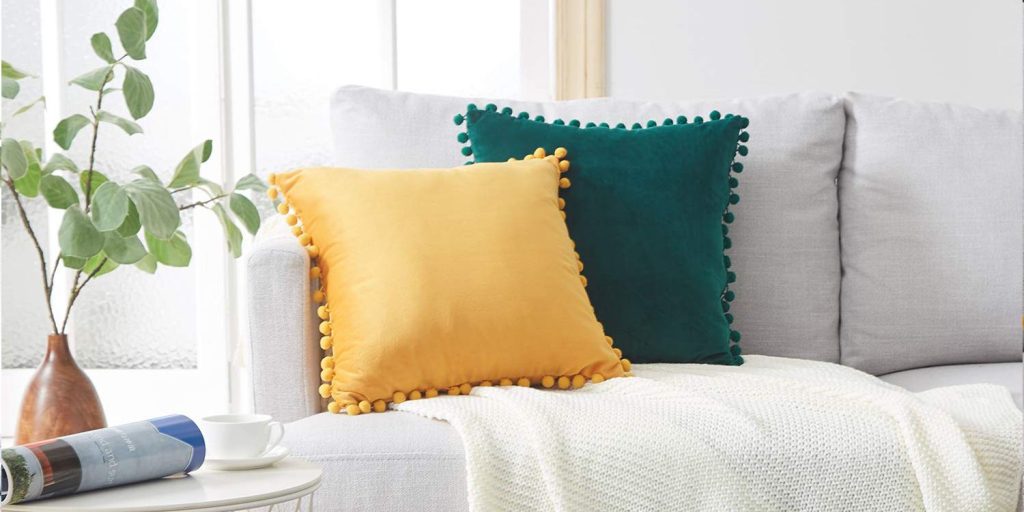Introduction to Pillow Cases
Pillow cases are an essential component of our daily lives, often overlooked despite their significant impact on sleep quality and bedroom aesthetics. These fabric coverings for pillows serve multiple purposes: they protect the pillow from dirt and oils, contribute to the overall hygiene of our sleeping environment, and add a decorative touch to our bedding. Pillow cases come in various materials, sizes, and designs, each offering unique benefits and catering to different preferences. Understanding the different aspects of pillow cases can help you make informed choices to enhance your sleep experience and bedroom decor.
Material Matters: Choosing the Right Fabric
The material of a pillow case is crucial for both comfort and functionality. Common materials include cotton, silk, satin, linen, and polyester. Each material has its advantages and is suited for different needs.
- Cotton: Known for its breathability and softness, cotton pillow cases are a popular choice. They are easy to care for and come in various thread counts, which can affect their feel and durability. Egyptian cotton, in particular, is highly regarded for its luxurious texture and longevity.
- Silk: Silk pillow cases are celebrated for their smooth, luxurious feel. They are gentle on the skin and hair, reducing friction that can lead to wrinkles and hair breakage. Silk also has natural hypoallergenic properties, making it an excellent choice for those with allergies or sensitive skin.
- Satin: Similar to silk, satin pillow cases provide a smooth surface that is kind to hair and skin. While not a natural fiber, satin can mimic the qualities of silk at a more affordable price point.
- Linen: Linen pillow cases offer a unique texture and are highly durable. They are excellent for hot climates due to their breathability and moisture-wicking properties. Linen becomes softer with each wash, making it a long-lasting investment.
- Polyester: Polyester pillow cases are known for their affordability and durability. They are resistant to wrinkles and stains, making them a practical choice for everyday use. However, they may not be as breathable as natural fibers.
Choosing the right material depends on personal preferences, climate, and specific needs such as skin sensitivity or maintenance convenience.
The Impact of Thread Count
Thread count refers to the number of threads woven into one square inch of fabric and is often used as an indicator of a silk pillowcase UK quality. Higher thread counts generally mean a softer, smoother fabric, but this is not the sole factor to consider when selecting pillow cases.
- Low Thread Count (200-400): Pillow cases with a lower thread count are usually more breathable and cooler, making them suitable for hot climates or those who prefer a lighter fabric.
- Medium Thread Count (400-600): This range offers a balance of softness and durability. Pillow cases in this category are comfortable for everyday use and provide a pleasant sleeping experience.
- High Thread Count (600 and above): High thread count pillow cases are exceptionally soft and luxurious. They are ideal for those who prioritize a silky feel and are willing to invest in premium bedding.
It is important to note that thread count should not be the only factor in choosing pillow cases. The quality of the yarn, the type of weave, and the finishing process all play significant roles in determining the overall feel and durability of the fabric.
Style and Design: Elevating Bedroom Aesthetics
Pillow cases are not just functional items; they also contribute significantly to the visual appeal of your bedroom. With a wide range of colors, patterns, and designs available, pillow cases can be a key element in expressing your personal style and enhancing your bedroom decor.
- Solid Colors: Solid-colored pillow cases offer a classic, timeless look. They can be easily coordinated with other bedding elements and are suitable for various decor styles, from minimalist to traditional.
- Patterns and Prints: Patterned pillow cases can add a touch of personality and vibrancy to your bedroom. Options range from subtle stripes and geometric designs to bold florals and abstract art. Choosing patterns that complement your existing decor can create a cohesive and visually appealing space.
- Embellishments: Pillow cases with decorative elements such as embroidery, lace, or piping can add a touch of elegance and sophistication to your bedding. These embellishments can elevate the overall look of your bedroom, making it feel more luxurious and inviting.
- Customization: Custom pillow cases with monograms or personalized designs can add a unique and personal touch to your bedding. These can also make thoughtful gifts for special occasions.
When selecting pillow cases for style and design, consider the overall theme of your bedroom and choose pieces that enhance and complement your existing decor.
Maintenance and Care: Ensuring Longevity
Proper care and maintenance of pillow cases are essential for preserving their appearance and extending their lifespan. Different materials require specific care instructions to keep them looking and feeling their best.
- Washing: Most pillow cases can be machine washed, but it is important to follow the care label instructions. Use a gentle cycle and mild detergent to prevent damage to the fabric. Silk and satin pillow cases may require hand washing or a delicate cycle to maintain their integrity.
- Drying: Air drying is often recommended for delicate fabrics like silk and satin to prevent shrinkage and maintain their smooth texture. Cotton and polyester pillow cases can usually be tumble dried on a low setting. Avoid high heat, as it can weaken the fibers and cause shrinkage.
- Ironing: Ironing may be necessary for certain materials to remove wrinkles and maintain a crisp appearance. Use a low heat setting for delicate fabrics and a medium to high setting for more durable materials like cotton. Always check the care label for specific instructions.
- Storage: Store pillow cases in a cool, dry place to prevent mold and mildew growth. Avoid storing them in plastic bags, as this can trap moisture and lead to discoloration or damage.
Regular care and maintenance will ensure that your pillow cases remain comfortable and visually appealing for years to come.
Conclusion: The Importance of Choosing the Right Pillow Case
Pillow cases play a vital role in our sleep quality and bedroom aesthetics. By selecting the right material, understanding the impact of thread count, considering style and design, and following proper maintenance practices, you can enhance both the functionality and appearance of your bedding. Investing in high-quality pillow cases not only contributes to a better night’s sleep but also adds a touch of luxury and personalization to your bedroom decor. Whether you prioritize comfort, style, or practicality, there is a perfect pillow case out there to meet your needs and preferences.


